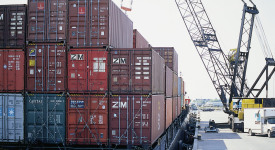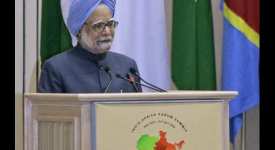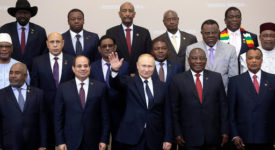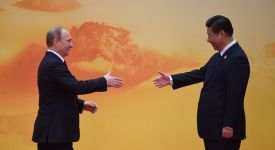During the past decade, a great deal of attention and also concern, both at the academic level as well as in the corridors of power in the world’s largest capital cities, was focused on the seemingly unstoppable ascendance of BRIC and many other emerging-market economies. The shift in the combined global output of China and India from less than 5% to 1980 to over 20% of world GDP last year has lead to substantial and highly disruptive changes in the global economy. The BRICS, or Brazil, Russia, India, China, and South Africa, with their large populations and fast economic growth, were projected to rise to about one-third of global output by the end of the decade, with China becoming largest of all even before this ‘deadline’. Needless to say that the double-digit growth in developing-market economies stood in sharp contrast with the less than lack-luster economic performance of the developed countries reeling from a protracted recession and crisis of confidence. But with their recent sharp economic slowdown, can we now declare an end to the ‘BRIC era’? And, if this is the case, what particular challenges are these previous hopefuls facing?
The figures are quite telling: Brazil’s GDP grew by only 1% last year and Russia’s economy may grow by barely 2% this year – this lackluster statistics could arguably be the result of the looming end of the commodity super-cycle which has so far greatly helped to fuel the resource-rich countries’ economies. While recently declaring the end of the commodity boom that would now be difficult to sustain especially in the light of China’s slowdown and decreasing emphasis on resource-oriented growth models, the Australian Prime Minister Kevin Rudd also warned that this major shift will present his country with “a massive new challenge.”
Many other previously fast-growing emerging-market economies are presently going through a similar slowdown. Indonesia is now predicted to face a more pronounced growth slowdown in the coming years due to subdued export levels, weaker outlook for investment and increasing current account deficit. Southeast Asia’s largest economy that has over the last few years boasted the world’s highest consumer confidence will, according to the latest World Bank report, need to adjust to less buoyant economic conditions and more challenging external financing conditions. This assessment effectively defies the earlier prevalent assumption that the emerging-market economies could somehow largely escape the repercussions from economic weakness in advanced economies.
The lingering Euro crisis and ongoing recession in Europe and sluggish economic growth in the U.S. were always bound to eventually affect emerging-market economies whether through slumping demand for their energy and mineral resources like in the case of Indonesia or deteriorating investor confidence in Turkey. Turkey’s weakening macroeconomic outlook, for example, is due to a combination of the ongoing Euro-zone downturn and the protracted domestic instability and political crisis. Weeks of nationwide anti-government protests have pushed Turkey’s borrowing costs higher and sent Turkish lira tumbling against the U.S. dollar. With soaring inflation on the back of fast-rising food prices and unabated protests against Erdogan-led government roiling Istanbul, Turkey may well now be descending into a protracted political and economic winter.
India’s economy whose strong growth in recent years has slowed to 4% last year now almost appears to be in a worse condition – at least in terms of economic inequality and the Indian rupee’s all-time low exchange rate against the U.S. dollar – than where it was two decades ago when the country embarked on a series of economic reforms engineered by the current Prime Minister Manmohan Singh. With the bearish markets, few signs of a revival in foreign investment, along with soaring food inflation hurting mostly the poor, India’s current account deficit reached a historical level of 6.7% of GDP in December 2012. A growing number of emerging-market economies, including Turkey and India, now tend to run current account deficits that are, to make things worse, financed in riskier ways, such as by short-term foreign-currency debt. Thus, Reserve Bank of India recently warned that the country faces challenges to finance its record high current account deficit given the risks of large-scale capital outflows.
While in India the main problem may lie in the slow pace of urgently-needed reforms that are inconsistent with the recent double-digit growth rates, China’s own predicament seems to be the need to decelerate its overheating economy while allowing for a transformation from a resource-intensive, investment-led growth to a more consumption- and services-oriented economy. As a matter of fact, China’s economy is going through an enormous gear change, slowing down from an average 10% growth rate over the last three decades to about 7.8% last year. China’s economy on steroids and growth hormones (in the form of cheap government credit, import-substitution industrialization policies, trade protectionism and yuan exchange kept artificially low) that has grown too fast now risks a hard landing – much like the recently bankrupt Chinese company Suntech Power, once the world’s largest solar panel maker. While Suntech Power fed with cheap credit and a vision of unceasing global expansion is now facing bankruptcy, governments in China and many other previously fast-growing emerging-market economies have no choice but tighten their monetary policies.
Welcome to the post-BRICS era!







